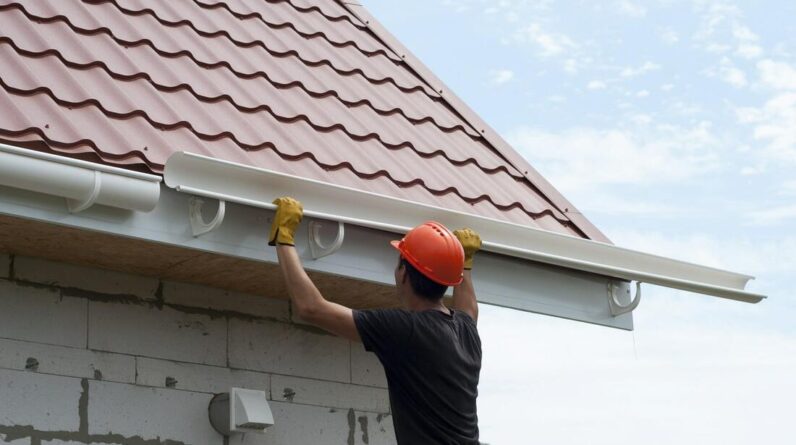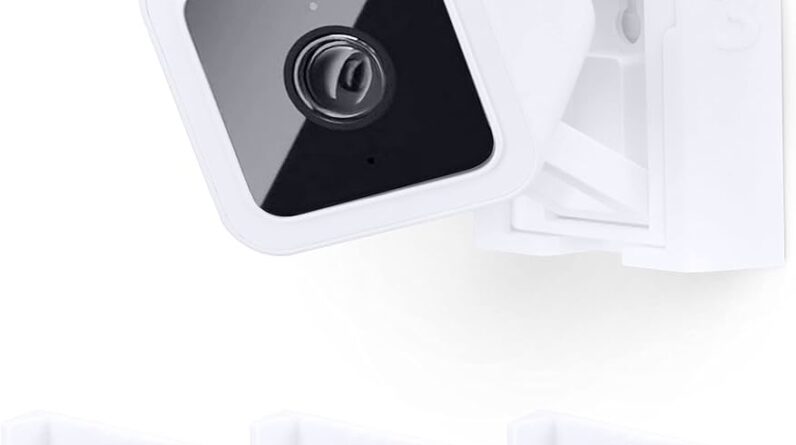To install a SharkBite valve on copper, simply cut the copper pipe, clean the ends, and push the SharkBite valve onto the pipe until it locks in place. The SharkBite valve is a convenient and reliable solution for connecting copper pipes without the need for soldering or special tools.
Installing it is a quick and easy process that can be accomplished by anyone, even without prior plumbing experience. Whether you are a DIY enthusiast or a professional plumber, this guide will walk you through the steps to successfully install a SharkBite valve on copper pipes, ensuring a secure and leak-free connection every time.
So, let’s get started and learn how to install a SharkBite valve on copper pipes.
Benefits Of Sharkbite Valves
Sharkbite valves provide numerous benefits for installing on copper pipes. One of the key advantages is the easy and convenient installation process. Unlike traditional methods that require soldering or special tools, Sharkbite valves allow for quick and hassle-free installation. The unique push-to-connect feature eliminates the need for soldering, making it an ideal choice for both professionals and DIY enthusiasts.
Another benefit is the versatility in connecting copper pipes. Sharkbite valves are designed to accommodate various sizes and types of copper pipes, ensuring a secure connection every time. Whether it’s joining pipes of different diameters or connecting copper pipes to other materials, Sharkbite valves offer a reliable solution.
Additionally, these valves are known for their durable and reliable performance. Made from high-quality materials, Sharkbite valves are built to withstand the rigors of everyday use, providing a long-lasting solution for plumbing installations. From residential to commercial applications, Sharkbite valves offer peace of mind and reliable functionality.
Understanding Sharkbite Valve Components
The Sharkbite valve is a convenient and efficient option for installing valves on copper pipes. It consists of several components that work together to ensure a secure and reliable connection. The valve body is the main component that allows for the flow of water or other fluids. It is designed with a push-to-connect feature, which eliminates the need for soldering or other time-consuming methods. The valve body also contains O-rings that provide a watertight seal, preventing any leakage or drips. Additionally, the grip rings on the valve body ensure a firm grip and hold on the copper pipe, further enhancing the stability and durability of the connection. Overall, the Sharkbite valve offers a user-friendly and efficient solution for installing valves on copper pipes, making it a popular choice among homeowners and professionals alike.
Gather The Required Tools And Materials
To install a Sharkbite valve on copper, you will need the following tools and materials:
| Sharkbite valve | Pipe cutter | Deburring tool | Measuring tape | Rag or towel |
Before starting the installation process, ensure that you have all the necessary tools and materials at hand. The Sharkbite valve is an essential component for connecting copper pipes easily and securely. You will also need a pipe cutter to cut the copper pipe to the desired length. A deburring tool is necessary to remove any sharp edges from the pipe after cutting. Use a measuring tape to accurately measure the length of pipe needed for the installation. Lastly, keep a rag or towel nearby to clean up any spills or drips during the process. Having these tools and materials ready will make the installation process much smoother and efficient.
Shutting Off The Water Supply
To install a Sharkbite valve on copper, the first step is to shut off the water supply. Start by locating the main water shut-off valve. This valve is typically found near the water meter or at the point where the main water line enters your home. Once you have located the valve, turn it clockwise to shut off the water supply.
Step 1: Measure And Mark The Copper Pipe
Step 1: Measure and Mark the Copper Pipe
Measure the length for the valve installation. Mark the pipe using a permanent marker.
Now that you have decided to install a Sharkbite valve on your copper pipe, the first step is to measure the length where you want to install the valve. Ensure you have the correct dimensions before proceeding further. Use a measuring tape to get an accurate measurement. Once you have determined the correct length, mark the pipe using a permanent marker. This mark will serve as a guide for the installation process and will help you position the valve correctly.
Step 2: Cut The Copper Pipe
When installing a Sharkbite Valve on a Copper pipe, it is important to cut the pipe properly to ensure a secure connection. Position the pipe cutter around the marked area where the cut needs to be made. Make sure the cutter is firmly in place and then rotate the cutter around the pipe to create a clean cut. It is crucial to achieve a smooth and even cut to prevent any leaks or damage to the valve and pipe. Once the cut is complete, be sure to remove any burrs or rough edges from the pipe with a file or sandpaper. This will help to ensure a snug fit and proper functioning of the Sharkbite Valve.
Step 3: Deburr The Pipe Ends
In step 3 of installing a Sharkbite valve on copper, it is important to deburr the pipe ends to ensure they are smooth and clean.
Deburring the pipe can be done using a deburring tool. This tool helps to remove any rough edges that may be present on the pipe ends.
By deburring the pipe ends, you create a clean surface for the Sharkbite valve to be installed. Smooth pipe ends also help to create a proper seal and prevent leaks in the future.
Make sure to thoroughly deburr both pipe ends before proceeding with the installation of the Sharkbite valve. This step may seem small, but it is crucial for the overall success and functionality of the valve.
Step 4: Insert The Sharkbite Valve
To install a Sharkbite Valve on Copper, follow these steps:
| Step 4: Insert the Sharkbite Valve |
Align the Sharkbite valve with the pipe ends. Push the valve onto the pipe until it reaches the depth mark.
Ensure that the Sharkbite valve and the pipe ends are properly aligned before inserting the valve. This will ensure a secure connection. Use a ruler or tape measure to verify that the valve is pushed onto the pipe to the correct depth. The depth mark on the valve indicates the optimal insertion point.
Insert the Sharkbite valve firmly onto the pipe until it clicks into place. The click will confirm that the valve is securely seated. You can now proceed with the next steps of the installation process, such as connecting additional plumbing components or securing the valve in place.
Remember to follow the manufacturer’s instructions and safety guidelines throughout the installation process to ensure a successful and reliable connection.
Step 5: Check For Proper Connection
To check for proper connection after installing the Sharkbite valve on copper, there are a few steps you need to follow:
- Make sure the valve is fully seated on the pipe. This means that the valve should be pushed all the way onto the pipe until it stops.
- Next, ensure that the O-rings on the Sharkbite valve are properly aligned. This will help to create a tight and secure seal.
- Inspect the connections and verify that they are sealed properly. Look for any signs of leaking or gaps between the valve and the pipe.
- Depending on your specific installation, you may need to use a pressure gauge or perform a pressure test to further verify the connection’s integrity.
- If everything checks out and the valve is securely connected, you can proceed with your plumbing project with confidence.
By following these steps, you can ensure that the Sharkbite valve is installed correctly and that it will provide you with a reliable and leak-free connection.
Step 6: Test The Valve Installation
Now that you have successfully installed the Sharkbite Valve on your copper pipe, it is time to test the installation. To do this, you will need to turn the main water supply back on. This will allow water to flow through the newly installed valve.
Once the water is turned back on, carefully check for any leaks around the valve. Look for any signs of dripping or water pooling around the connection points. If you notice any leaks, it may indicate that the valve is not properly sealed and needs further attention.
It is crucial to address any leaks right away to prevent water damage and ensure the valve functions correctly. If you do find a leak, consider tightening the connections or consulting a professional for assistance.
Helpful Tips For Easy Installation
Installing a Sharkbite Valve on a copper pipe can be a straightforward process if you follow a few helpful tips. First, make sure you use a pipe cutter specifically designed for copper pipes. This will ensure clean, smooth cuts that will make it easier to fit the valve properly.
Next, carefully read and follow the manufacturer’s instructions that come with the Sharkbite Valve. These instructions will provide step-by-step guidance on how to properly install the valve. Pay close attention to any specific requirements or precautions mentioned.
When it’s time to attach the valve to the copper pipe, apply gentle pressure. Push the valve onto the pipe firmly but avoid using excessive force. The Sharkbite Valve is designed to provide a secure connection without the need for soldering or glue.
By following these tips, you can install a Sharkbite Valve on a copper pipe with confidence and ensure a reliable connection.
Common Issues And Troubleshooting
Leaking around the valve connection can be a common issue when installing a Sharkbite Valve on Copper pipes. This can occur due to various reasons such as improper installation or a faulty valve. To troubleshoot this problem, first ensure that the pipe surface is clean and free from any debris or oxidation. Then, make sure the pipe is properly inserted into the valve by firmly pushing it until it stops. If the leaking persists, check for any damage or defects on the valve or pipe that may be causing the issue. In some cases, applying pipe joint compound or thread seal tape on the valve threads can help create a tight seal and prevent leaks.
Difficulty in pushing or removing the valve can be encountered, especially in tight or limited spaces. In such situations, it is important to use the correct Sharkbite installation tool to provide a secure grip on the valve and ensure proper alignment. If the valve is hard to push, apply a small amount of lubricant to the pipes to ease the insertion process. When removing the valve, it may be helpful to use a wrench or pliers to provide extra leverage and gently twist it off. However, be cautious not to apply excessive force that could damage the pipes or valve.
Precautions And Safety Measures
When installing a Sharkbite valve on copper pipes, it is important to take precautions and follow safety measures to ensure a smooth and secure installation. To protect your hands from the sharp edges of the valve, it is recommended to wear gloves throughout the installation process.
Excessive force should be avoided when installing the valve, as it may damage the copper pipes or cause leaks. It is crucial to carefully read and follow all safety guidelines provided by the manufacturer to ensure the proper installation of the Sharkbite valve.
Frequently Asked Questions Of How To Install Sharkbite Valve On Copper
How Do I Install A Sharkbite Valve On Copper?
Installing a Sharkbite Valve on Copper is a straightforward process. First, cut the copper pipe with a pipe cutter. Next, ensure that the cut end is smooth and free from burrs. Then, push the Sharkbite Valve onto the pipe until it reaches the insertion mark.
Lastly, check for leaks and ensure a tight connection.
Can I Install A Sharkbite Valve Without Soldering?
Yes, one of the advantages of using a Sharkbite Valve is that it eliminates the need for soldering. The Sharkbite Valve uses a push-to-connect system, allowing for a quick and easy installation on copper pipes without the hassle of soldering.
What Are The Benefits Of Using A Sharkbite Valve On Copper?
Using a Sharkbite Valve on Copper offers several benefits. Firstly, it provides a secure and leak-free connection. Secondly, it saves time and effort as there is no need for soldering. Additionally, it allows for easy disconnection and reconnection if necessary.
Overall, the Sharkbite Valve is a convenient and reliable solution for copper pipe installations.
Conclusion
Installing a Sharkbite valve on copper pipes is a straightforward process that can easily be done by following a few simple steps. By carefully preparing the pipe, inserting the valve, and securing it in place, you can ensure a leak-free and reliable connection.
With its innovative design and ease of installation, Sharkbite valves provide a convenient solution for both professional plumbers and DIY enthusiasts. Upgrade your copper plumbing system today with Sharkbite valves for added convenience and peace of mind.






